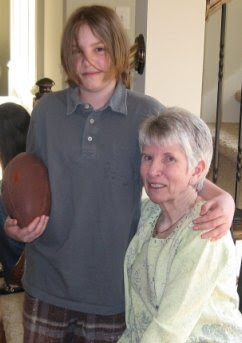The public celebration of women's history in the United States began in 1978 as Women's History Week in Sonoma, California. In 1981, Sen. Orrin Hatch (R-Utah) and Rep. Barbara Mikulski (D-Md.) co-sponsored a joint Congressional resolution proclaiming a national Women's History Week. In 1987, Congress expanded the celebration to a month, and March was declared Women's History Month.
Before the 1970s, there were one or two scholars who would refer to themselves as "women historians." Until this time, history was written by men about men and quite frankly, for men. However, fueled by the feminist movement of the 60s and the continued political and economic discrimination of the female sex in the 70s, women turned to their own history as a way to document their status as second-class citizens. The invisibility of women in history was to become a thing of the past.
A traditional study of Women's History would generally include a chronological examination of distinguished and influential women in history such as Abigail Adams, Susan B. Anthony, Amelia Earhart, Anne Frank, Indira Ghandi, Queen Elizabeth I, Maya Angelou and many other important female icons whose stories shape Women's History as we know it today.
Issues at the forefront in documenting women's history were of the broader spectrum of American life, including such topics as the history of urban life, public health, ethnicity, the media, and poverty. As with the focus of most western history, the initial documentation of women's history tended to present a typical middle-class, white experience. Since few women held high political or professional positions in America in the 1970s and as civil rights stood ever-more in the forefront of politics, Women's History grew to include a more diverse cultural story and the shared, ordinary experiences of women such as child-rearing, birth control, education, family, and sexuality.
2009 Women's History Month: A Reflection of Diane Arbus
Diane Arbus is my own personal study during this month's celebration of Women's History. Inspired by the movie
Fur, a fantastical and imaginary tale, released in 2006 and starring Nicole Kidman, I've been digging into the personal, professional, and artistic history of one of America's most important photographers of the 20th Century - Diane Arbus.
Kidman, a

distinguished artist in her own right, beautifully and delicately portrays the eccentric photographer and her fascination with her neighbor, played by Robert Downey, Jr., who has stuck her fancy and who inspires her to explore her inner freak and photography in this whimsical, somewhat biographical tale.
Diane Arbus began photographing in the 1950s. Her work has been described as "contemporary anthology" and juxtaposes American stereotypes. Diane's work ranged from commercial photography for magazines such as Esquire and Vogue to the ordinary and even bizarre. As she shed the constraints of her traditional, affluent upbringing and American cultural expectations, Diane had a propensity for spending time with and photographing drag queens, circus performers, the mentally ill, and nudists - those who were on the fringe.

(Photo by Diane Arbus - Untitled. 1970-71)
Diane (dee-ann) Arbus was born in 1923 to wealthy, Jewish parents, David and Gertrude Nemerov. She had a privileged life with her two siblings in New York City, growing up in large apartments on Central Park West and later Park Avenue. Diane's family owned Russek's of Fifth Avenue, which was a department store specializing in furs.

"I grew up feeling immune and exempt from circumstance. One of the things I suffered from was that I never felt adversity. I was confirmed in a sense of unreality," she later told Studs Terkel, for his Hard Times: An Oral History of the Depression.
Diane met Allan Arbus in her parents' store when she was 13, and the two married in 1941when she was 18. Allan and Diane owned and operated a fashion photography studio in New York City where they carried out stereotypical roles of the time with Allan as photographer and Diane as assistant. However, their photographs were published giving credit to them both. They shot for magazines such as Esquire, Harper's Bazaar, The New York Times Magazine, and Vogue, but their wealth never measured to that of Diane's family's.
The couple had two children, Doon and Yolanda and continued to work together until 1956 when Diane decided to pursue her work independently. Though the couple remained friends, they separated in 1959. "I always felt that it was our separation that made her a photographer," Allan told the New York Times . "I couldn't have stood for her going to the places she did. She'd go to bars on the Bowery and to people's houses. I would have been horrified." Allan remarried in 1969 and moved to California where he won the role as Dr. Sydney Freidman on M.A.S.H. Diane Arbus would go on to become one of the most original and influential photographers in the Country.
Arbus' most widely known images are those of her more freakish subjects and reflect her dark documentary-style. Diane was awarded Guggenheim fellowships both in 1963 and 1966 for her non-commercial work. In 1967, John Szarkowski, curator of photography at the Modern Museum of Art, featured Arbus in the New Journalism movements's (think Norman Mailer and Tom Wolfe) manifesto exhibit, New Documents, where Diane established her reputation. Her story is the stuff of Shakespeare, and her own tragic decline stopped abruptly a few years after her launch.

Succumbing to depression in 1971, Diane committed suicide by consuming barbiturates and cutting her wrists. The Museum of Modern art held a retrospective of her work a year later, which became the most attended solo photography exhibitions in history. The art book that followed, edited by Doon Arbus and Marvin Israel is one of the best selling art books in history.
Diane Arbus' story tells the tale of of so many other great artists - brilliant and tortured. Her life and work are an important part of not only Women's History but also of the photography scene of 20th Century American and of the New Documents movement. Arbus touched, and continues to touch, people with a creepily mythical hand.
"Freaks was a thing I photographed a lot," she wrote. "It was one of the first things I photographed and it had a terrific kind of excitement for me. I just used to adore them. I still do adore some of them. I don't quite mean they're my best friends but they made me feel a mixture of shame and awe. There's a quality of legend about freaks. Like a person in a fairy tale who stops you and demands that you answer a riddle. Most people go through life dreading they'll have a traumatic experience. Freaks were born with their trauma. They've already passed their test in life. They're aristocrats."
(1)(2)Images found on the internet by Diane Arbus

Identical Twins. Aperture.

Untitled. 1970-71

Tattooed Man at Carnival. MD. 1970

Title Unknown.

Mia Farrow.
A Family on Their Lawn One Sunday in Westchester. NY. 1968
Ozzy and Harriett.

Title Unknown.

Masked Woman in Wheelchair. PA. 1970
(1) Terkel, Studs. Hard Times: An Oral History of the Depression. Newpress, 2000.
(2) Oppenheimer, Daniel. Diane Arbus. The Valley Advocate.
 Check out the following documentary on Diane Arbus with an introduction by her daughter, Doon Arbus. Hear her own words speak on her fascination with "freaks" read by Mary Claire Costello, one of her close friends. There are also interviews with Lisette Model, a European émigree and photographer who instructed a class Diane attended, with John Szarkowski, Curator of Photography at the Museum of Modern Art from 1962-1991, and with Marvin Israel, co-author of An Aperture Monograph with Doon Arbus, and more. Also, I've included some clips from the movie, Fur at the end. I highly recommend renting it; outstanding! Note, these videos may not be for your kiddies. Parental discretion is advised.
Check out the following documentary on Diane Arbus with an introduction by her daughter, Doon Arbus. Hear her own words speak on her fascination with "freaks" read by Mary Claire Costello, one of her close friends. There are also interviews with Lisette Model, a European émigree and photographer who instructed a class Diane attended, with John Szarkowski, Curator of Photography at the Museum of Modern Art from 1962-1991, and with Marvin Israel, co-author of An Aperture Monograph with Doon Arbus, and more. Also, I've included some clips from the movie, Fur at the end. I highly recommend renting it; outstanding! Note, these videos may not be for your kiddies. Parental discretion is advised.







































